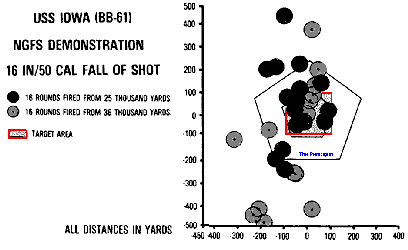
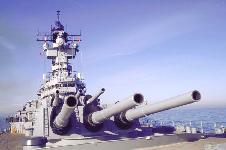
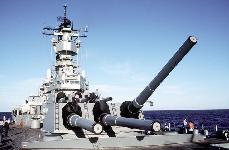
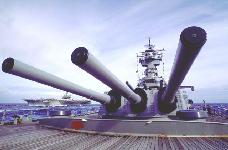
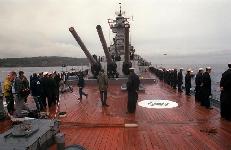
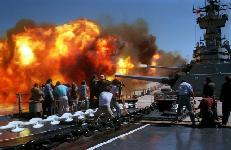
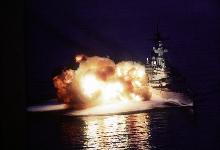
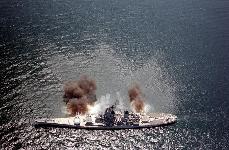
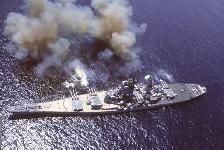
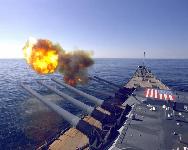
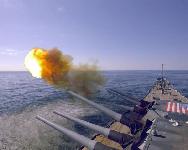
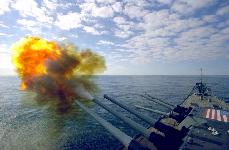



Subsequent investigations found that there was absolutely no proof that S1c. Clayton Hartwig committed that terrible crime. The General Accounting Office [GAO] assessed the Navy's investigation and conclusions, and Sandia National Laboratories in Albuquerque NM assisted the General Accounting Office by undertaking an independent technical analysis of the Navy's gun tests. On May 25, 1990, GAO and Sandia officials testified that the Navy's investigation suffered from significant shortcomings. In particular, Sandia's gun tests, and an initial follow-up test by the Navy itself, demonstrated that the Iowa explosion may have been caused by unsafe powder bags and an `over ram' of the bags during the firing of the 16-inch gun. This finding essentially eviscerated the Navy's conclusion that the explosion resulted from a wrongful intentional act. The testimony by the General Accounting Office also documented serious deficiencies in the Navy's employment of the battleships, both in terms of officer and enlisted manning and in terms of the training given to the gun crews.
During Operation DESERT STORM battleships USS WISCONSIN and USS MISSOURI fired more than 1.000 rounds of 16" ammunition in support of ground operations. USS MISSOURI alone fired more than one million pounds of ordnance. Using Remotely Piloted Vehicles and Marine spotters ashore, targets included artillery, mortar and missile positions, ammunition storage facilities and a Silkworm missile site. USS WISCONSIN's RPVs provided on-site reconnaissance support from 11 nautical miles out for advancing Marines. On 03 February 1991 the battleship USS MISSOURI (BB-63) fired eight 1.25-ton shells from its 16-inch guns at prefabricated concrete command and control bunkers Iraq was moving into Kuwait, destroying the bunkers. The barrage, totalling 18,000 pounds of high explosives, marked the first combat firing of the MISSOURI's 16-inch guns since the Korean War, and was in support of Marines and coalition ground forces. This also marked the first use of a Remotely Piloted Vehicle (RPV) for gun fire spotting in a hostile environment. And on 03 February USS MISSOURI destroyed an Iraqi artillery emplacement. On 06 February USS MISSOURI destroyed 4 artillery emplacements and a command bunker with another 16-inch gun barrage in support of Marines. In a second salvo, the MISSOURI fired 28 16-inch rounds against a radar control site complex, completely destroying it. 5-inch batteries also engaged. MISSOURI had fired a total of 112 16-inch shells and 12 five-inch rounds in 8 fire support missions over 48 hours.
Within two hours of relieving its sister battleship, USS WISCONSIN (BB 64) conducted its first naval gunffre support mission since the Korean War, firing an 11-round salvo with its 16-inch guns and destroying an Iraqi artillery battery in southern Kuwait. Secondary explosions reported. USS NICHOLAS escorted the battleship. USMC OV-10 called in the fire mission. On 07 February USS WISCONSIN pounded Iraqi artillery, electronic warfare and naval sites with its 16 inch guns. 50 rounds sunk or severely damaged 15 boats, destroyed piers at Khawr al-Mufattah Marina. 19 rounds also fired at artillery and missile sites. On 08 February USS WISCONSIN attacked a dozen Iraqi artillery emplacements with 36 rounds of its 16-inch guns in support of a Marine reconnaissance probe into occupied Kuwait. Using its remotely pilot vehicle to visually relay pictures and gun-firing coordinates of targets, the battleships's harassment and interdiction mission was designed to pin down and confuse Iraqi gunners during the Marine attack. Off Khafji, Saudi Arabia, WISCONSIN also blasted bunkers, troops and artillery sites, and continued its naval gunfire missions responding to calls for fire from U.S. and coalition forces on 09 February. Then on 12 February USS MISSOURI, USMC aircraft/artillery, and Saudi artillery mounted a combined arms attack on multiple fixed-position targets (Iraqi troops, artillery, a hardened command bunker and tanks) in southern Kuwait. The battleship expended 60 rounds in 9 naval gunfire support missions. On 21 February USS WISCONSIN destroyed a command complex, firing 50 rounds from off Khafji. RPVs spotted targets and provided coastline reconnaissance. Two days later USS MISSOURI destroyed targets on Favlaka Island off the coast of Kuwait City. On 24 February CINCCENTCOM announced the initiation of the ground offensive, and USS MISSOURI and USS WISCONSIN fired at targets in occupied Kuwait in support of the ground offensive. The next day USS WISCONSIN and USS MISSOURI continued naval gunfire support, with MISSOURI alone firing 133 rounds or 125 tons of ordnance on targets. Naval Sea Systems Command's Indian Head Division of the Naval Surface Warfare Center is the Navy Design Agent (DA) for large caliber naval gun propellant and propelling charges, responsible for maintaining the designs for Navy gun propelling charges, controlling the design of the individual components of the propelling charges including the ignition systems, propellants, cartridge cases, and closure components.










